Let’s talk about framing.
“Framing” refers to the choices we make about how to tell a story. The words we use, the tone we take, the people we quote and the people we don’t quote—all those little things affect the way people hear a story and the impressions they take away.
This is awfully postmodern of me, but there’s really no such thing as an unvarnished, unfiltered, truly “neutral” way of telling a story. When you read a news article in the paper or hear one on the radio, what you’re getting is a picture in a frame—and that frame has a very real impact on how you interpret the information you’re receiving.
Nothing inherently wrong with this, so long as we’re all aware of it. The frame is invisible—it’s often hard to spot—but as long as we all pay attention, we’re good.
But when we forget to be aware—when we start taking the frame for granted—when reporters mindlessly perpetuate the same frames over and over and when the consumers of media begin to see those frames as gospel truth—well, that’s when people start getting hurt.
Case in point: UNC versus Michigan State.
I’m not talking about basketball.
I’m talking about “riots.”
On Saturday night, the Michigan State Spartans upset Ohio State to win the Big 10 title and make the Rose Bowl for the first time in 26 years. Afterwards, about 3,000 students gathered for a postgame celebration at Cedar Village, an apartment complex at the edge of campus. There were a number of bonfires—students setting their old couches ablaze, mostly—and that was about it. Cedar Village reported about $10,000 in external property damage, but that was the worst of it. There were no injuries.
East Lansing police went ballistic.
So did Michigan State University officials.
And the media.
Here are some of the choicer bits.
From Fox Sports: “East Lansing police say at least 15 people were arrested during a rowdy celebration of Michigan State’s victory over Ohio State in the Big Ten championship game…Police are offering up to $20,000 for tips that lead to convictions…Michigan State basketball coach Tom Izzo says he’s disgusted and disappointed by what happened.”
From WILX, a local TV station: “The victory party may be over, but the consequences for the people celebrating in the streets may just be beginning…the city and the University are cracking down, vowing to prosecute as many people as possible involved in a post-game celebration that featured furniture fires…MSU has also vowed disciplinary action, after President Lou Anna K. Simon called the post-game behavior ‘disappointing.’”
Also from WILX, this quote from University spokesperson Kent Casella: “Any student identified as taking part in setting or fueling fires will be subject to the MSU student judicial process, regardless of any criminal charges being filed…If a student is found in violation, he or she faces sanctions ranging from warning to dismissal.”
And from the State News, the MSU student paper, this headline in all caps: “RIOTERS DESCEND ON CEDAR VILLAGE; FIRES, CHAOS ENSUE.”
This is standard practice in East Lansing, Michigan. It’s been this way for fifteen years. Back in 1999 there was a legitimate riot that caused a quarter of a million dollars in damage, and ever since then we’ve had it in our heads that every student celebration is a “riot” or an “emergency situation” that requires tear gas and riot police and mass arrests and fines and jail time and threats of expulsion. Sometimes actual expulsion.
This is how these student gatherings are framed at MSU. And everyone’s complicit in it. East Lansing police assume it’s their job to stop the party altogether, so they’re in hostile-situation mode from the get-go; that provokes the students, who respond by provoking the police, everything escalates and out comes the tear gas. Reporters invariably call them “riots” and focus all their attention on the cost, the damage, the arrests, the tut-tutting over drunken students gone wild. University officials shift into damage-control mode—denouncing the students who take part, disassociating them from the University as much as possible, and seizing every opportunity to insist that MSU as a whole is comprised of good, decent students who would never participate in such rowdy, drunken shenanigans.
And residents in the area go along with it. “Way to spoil a wonderful night,” writes one commenter on the State News story. “You all should be ashamed of yourselves.” Words like “embarrassing” keep cropping up. Words like “garbage.” Somebody else wrote on Facebook: “The players and coaches must be thrilled to know their victory gets overshadowed by the antics of drunken vandals.”
There’s even a Wikipedia page devoted to “Michigan State University student riots.”
People in the Lansing area take all of this for granted. Most folks there can’t imagine these “riots” being interpreted any other way.
Folks in Chapel Hill know better.
Don’t we?
In 2009, you see…
Well. You can watch the video for yourself. The staff at the Daily Tar Heel put it together, to commemorate the glorious post-game “celebration” of UNC’s national championship (over Michigan State, ironically enough).
Check out that video. It’s all there, plain as day. After the game, 45,000 people, most of them students, many of them drunk as hell, massed on Franklin Street. Fires were set, multiple fires, up and down the road, and folks jumped in and out of them all night long. Students climbed on town-owned streetlights and shook them until they nearly toppled. The “Columbia Street” sign was forcibly yanked down; people later used it to crowd-surf.
I could go on. Sexual assaults got reported. There were injuries. Chapel Hill’s chief of police said he saw someone climb a light pole and try to saw through a power line with a pocket knife. Tens of thousands of dollars in property damage. All told it cost the Town of Chapel Hill $200,000.
Did it make the national news as a “riot”? Was there hand-wringing? Mass arrests? Tear gas? Cops in riot gear? Threats of expulsion? Is UNC forever tainted as a result?
Nope. Exactly the opposite. It’s a watershed moment in Chapel Hill’s recent history. Everybody remembers it fondly.
In fact UNC sells glossy portraits of the celebration online, on the University’s official website, for anyone who wants to relive the moment. Glossy portraits!
Oh, sure, there was talk afterward of how the town could have better handled the situation. No doubt.
Three guesses how that played out.
From WRAL: “(Then-student body president Jasmin) Jones suggests getting a screen so the best game moments can be replayed. She would also like to have a sidewalk deejay…Jones also would like several beach balls to take the place of partiers who normally bounce on top of the large crowd.”
From the Daily Tar Heel: “Former Student Body President J.J. Raynor suggested giving out free food to keep people from drinking as much.”
The town did hold one forum on the matter. At the forum, town officials said it was worth discussing how to improve safety in the future, but unanimously insisted the “celebrations” were “central to UNC’s heritage.”
And what got done? Quoth the DTH: “Attendees were encouraged to remain involved with continued safety efforts by writing down their names and e-mail addresses to receive more information. No other concrete plans were made for moving forward.”
Wow.
That’s framing for you. Right there.
Seriously, read all those stories I linked to up there, first about MSU, then about UNC. Tell me the difference isn’t jawdropping.
Oh, you think there was some sort of difference between the two gatherings? It couldn’t have just been media framing?
Cool. Below are ten pictures. Four are from the MSU “riot” after the Ohio State game, screencapped from the WILX report. Six are from the UNC “celebration” on Franklin Street in 2009, screencapped from the DTH’s YouTube video.
Can you tell them apart? No cheating!
Answer: the first two and the last two are from Michigan State; the six in the middle are from UNC. Some of those are gimmes: the Columbia Street sign is obviously in Chapel Hill, and the riot police are obviously East Lansing. Can you imagine if the CHPD had broken out the riot gear and the assault weapons in 2009? Seriously, can you imagine?
Now, what do we make of all this? What galls me, personally, is the inconsistency. MSU students have been expelled, arrested, harshly punished by the law—they’ve had their lives ruined, in other words. If they’d been UNC students doing the exact same thing, they’d practically have carrels named after them at the library.
This is not to say that we’re doing it wrong in Chapel Hill.
In fact, looking at the two situations side by side, it’s pretty obvious that Chapel Hill’s the one that’s gotten it right. In Chapel Hill, town/gown relations are not toxic, so police don’t automatically assume that students are the enemy. Town officials see it as their job to manage and facilitate the celebration, not to put a stop to it at all costs—and so the situation gets managed. It’s not antagonistic. People don’t get vilified in the national media. They don’t have their lives ruined. It’s better here.
But let’s be clear about this: it is NOT better here because the students are better behaved. UNC students and MSU students behave exactly the same way, just like Tennessee students and Baylor students and Cal Tech students and students everywhere else that students gather. If it is better here, it is better because of the way we’ve framed it—as a “celebration” instead of a “riot,” as “excited” rather than “drunken,” as “rambunctious” rather than “violent.”
I’m watching the framing happen all over again at Michigan State this week. It wasn’t as big a “riot” as in years past, so there’s not as much hand-wringing—but still, all the talk has been “you ought to be ashamed of yourselves,” “we’re so disappointed in this behavior,” “we’re going to prosecute these people to the fullest extent of the law.” It makes me sick.
It could be worse, I guess. Michigan State students get the short end of the stick here, but they’re hardly the only ones. African-Americans after Hurricane Katrina, for instance, were invariably depicted as “looting” food by the national media, while their white counterparts were depicted as “finding” or “salvaging” food from the same stores. And let’s also save some sympathy for Woodstock ’99, that supposed anarchic chaotic violence-fest. Did you know three times as many people died at the original Woodstock back in ’69? Peace and love, pshaw.
But if you find yourself reading about the “riots” at MSU—or anything else, for that matter—do yourself a favor and stop to reflect on how the story’s being framed. What’s being assumed? What are the words that keep getting used? How else could the story be told, and why isn’t the story being told that way? It’s vital for consumers of media to ask these questions, and it’s vital for reporters to ask them too—otherwise we’ll find ourselves caught in the framing loop, and we’ll start forgetting how to see the world any other way.
Now if you’ll excuse me, I have to go frame this portrait of a bonfire at Cedar Village.
Rose Bowl, baby! Rose Bowl!


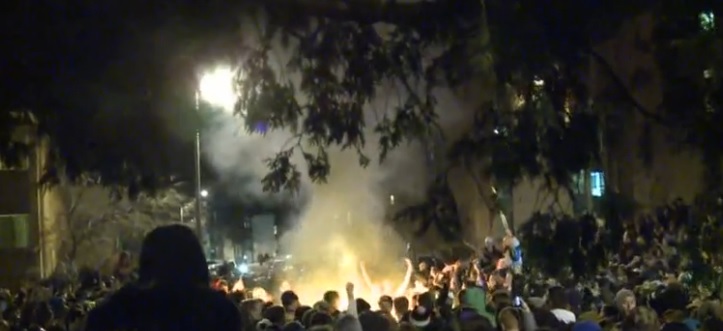
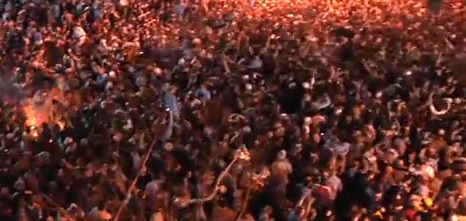


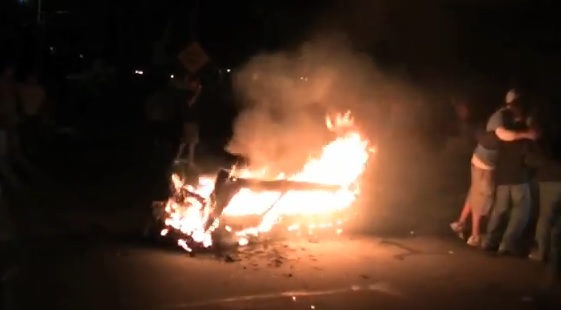
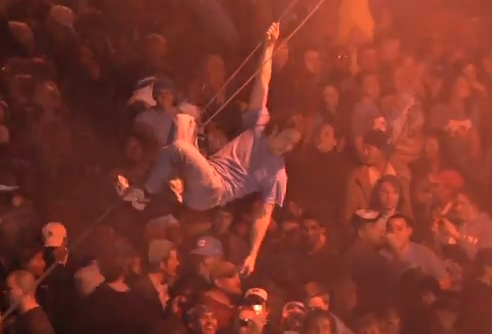

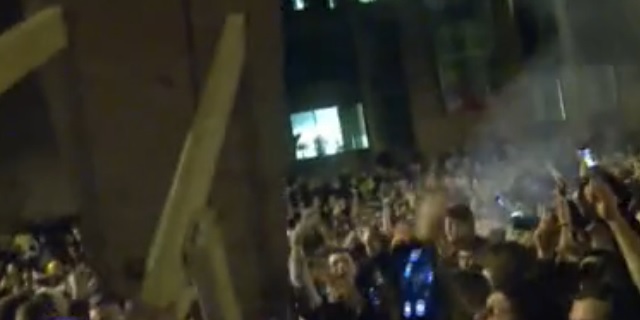
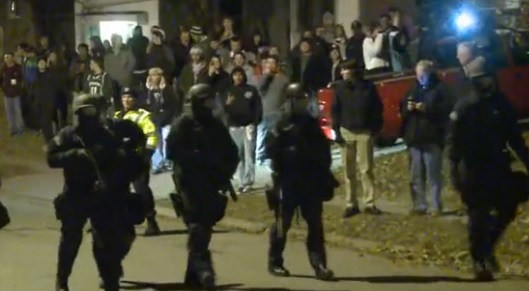
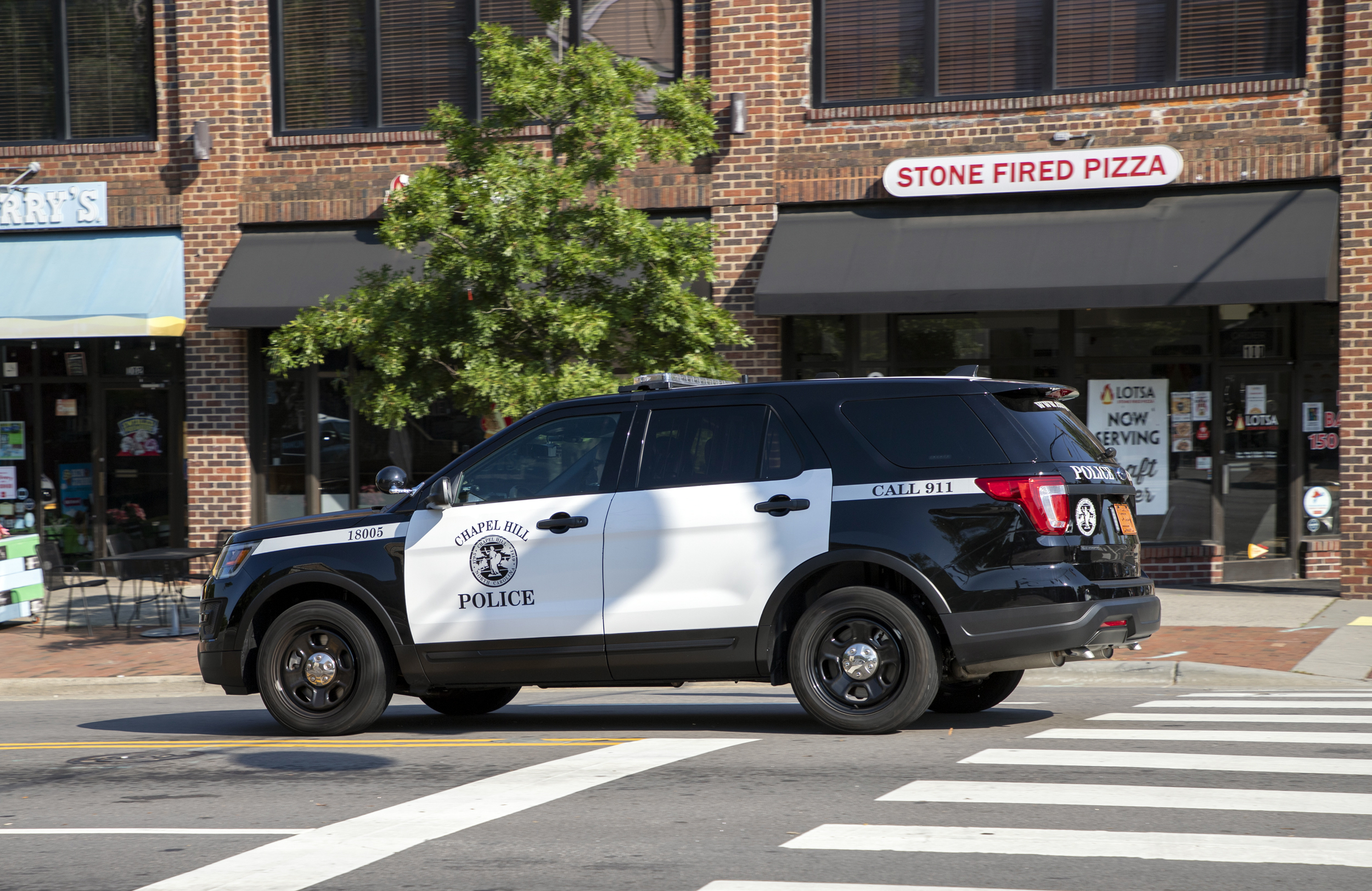

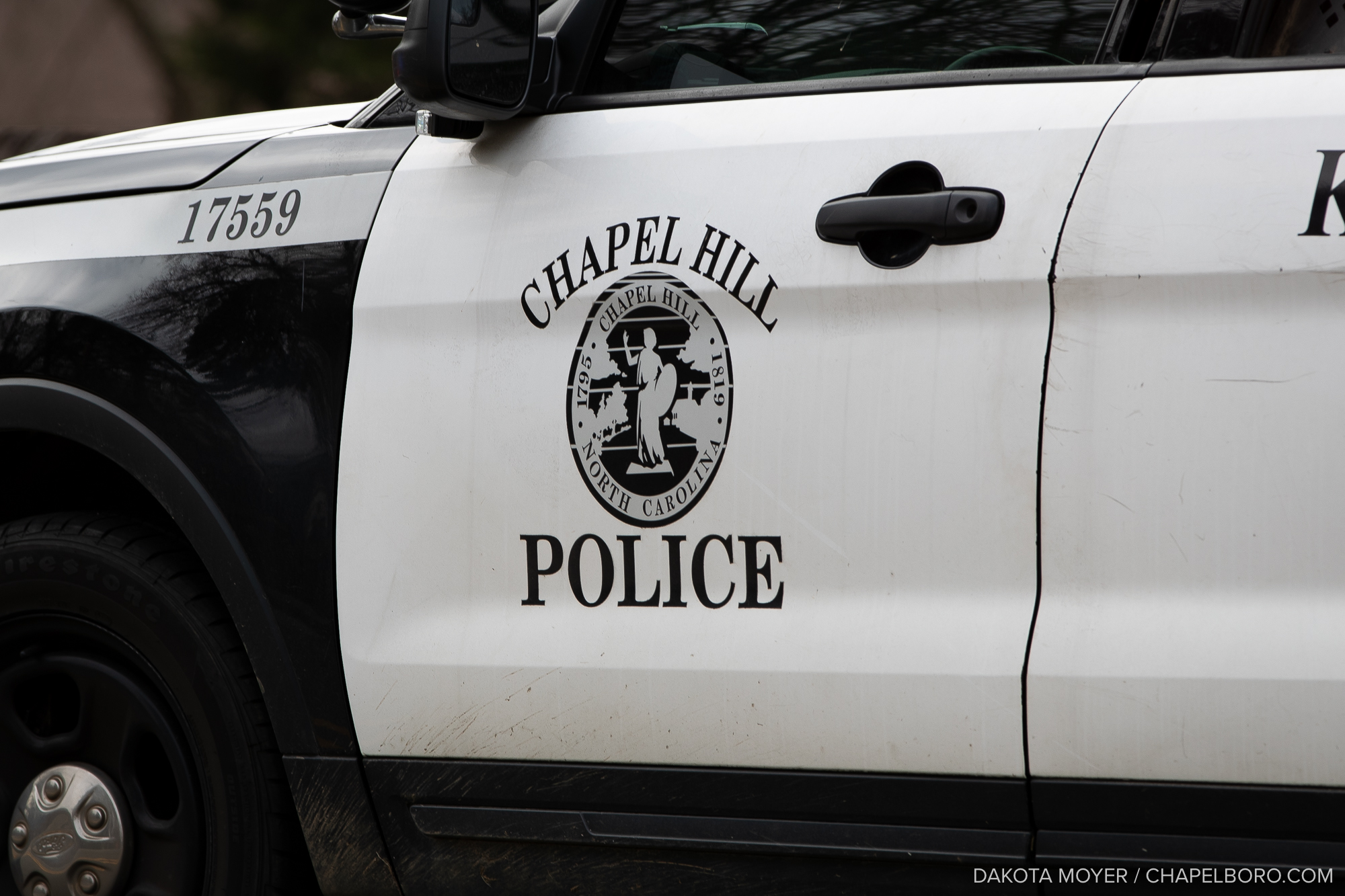


Comments on Chapelboro are moderated according to our Community Guidelines